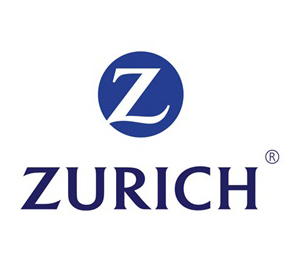Group Chief Executive Officer Mario Greco said: “We are on track to beat all our targets for the second successive three-year cycle. This is particularly remarkable because the last three years have brought unprecedented and unexpected challenges. These results show our agility and our commitment to deliver results, no matter what happens in the markets.
Half-year 2022 business operating profit (BOP) was USD 3.4 billion, an increase of 25% compared with USD 2.7 billion in the first six months of 2021. Growth was driven by an underlying improvement across all businesses. Natural catastrophe and weather-related claims were slightly above expected levels.
Property and casualty gross written premiums grew by 13% on a like-for-like6 basis, with strong growth achieved in both commercial insurance and the retail business. Growth continued to be supported by significant rate increases in the Group’s commercial business across all regions, with these trends expected to continue into 2023.
The impact of COVID-19 on business operating profit continues to decline. COVID-19-related losses in the Life business fell to USD 26 million from USD 137 million, and at Farmers Life to USD 32 million – mostly in the first quarter – from USD 42 million. On the other hand, the benefits due to reduced claims frequency in the P&C business were immaterial compared with USD 109 million in the prior-year period.
Net income after tax attributable to shareholders was USD 2.2 billion, up 1% over the prior-year period. The improvement in BOP was largely offset by negative mark-to-market effects.
The strength of the U.S. dollar versus other currencies was a headwind to both the reported BOP and net income.
The Group continues to focus on optimizing its capital allocation. In the first half, Zurich announced agreements to sell two legacy traditional life insurance back books in Italy and Germany.4
The Group plans a CHF 1.8 billion3 share buyback to offset the expected earnings dilution from the agreed sale of the Germany life back book.4 The buyback is expected to commence in the coming months, subject to market conditions and regulatory approvals. While the primary goal of the Germany life back book transaction is to reduce capital volatility, the portfolio is, and has been, a reliable contributor to earnings and it is not possible to immediately redeploy capital to offset this effect. The buyback is consistent with the Group’s prior position to avoid or compensate actions that would otherwise have a dilutive effect on shareholders.
Continued focus on improving customer satisfaction
Throughout the first half, the Group continued to advance its customer-focused strategy, which has again delivered higher customer satisfaction across the business. Net promoter scores have made further positive progress in the majority of retail markets as the Group deploys digital tools and enhanced insights to improve customer experience.
Retail customer numbers continued to grow, helped by Zurich’s continued strength in partnerships, with a net increase of more than 850,000.1
Delivering on ambition for a sustainable future
The Group took further tangible steps toward its vision of being one of the most responsible and impactful businesses in the world.
The outcome of Zurich’s work on reducing the impact of the operational footprint is increasingly apparent with total emissions down 73%7 relative to the 2019 baseline. While the pandemic has temporarily dampened emissions, Zurich is confident that it is on track to achieve durable reductions of 50% by 2025 and 70% by 2029.
The Group continued to support the restoration of part of the Atlantic Forest in Brazil to create a biodiverse and self-sustaining ecosystem on land formerly cleared for cattle farming. Since it started in 2020, the Zurich Forest project with non-profit Instituto Terra has planted 227,000 seedlings of native tree varieties out of the 1 million planned by 2028.
Business operating profit of USD 2,055 million was 32% higher than in the previous year. The Group achieved a record-low combined ratio of 91.9%. The reduction was mainly driven by an improvement in underwriting profitability with higher prices feeding into the results. Natural catastrophe and weather claims, which were slightly above expectations, were significantly lower than in the prior year. These improvements were partially offset by the absence of the prior year’s favorable net impact from COVID-19 and realized capital losses of USD 51 million, mainly driven by the Group’s hedge fund portfolio due to adverse financial markets, compared with a gain of USD 62 million in the prior-year period.
Gross written premiums grew 13% on a like-for-like basis, adjusting for currency movements, with growth in both retail and commercial insurance. All regions contributed to growth as higher rates fed into the results. In EMEA, growth was mainly driven by the UK, Germany and Switzerland. North America continued to benefit from higher commercial insurance prices, as well as rising agricultural commodity prices in the crop insurance business, which contributed about 2 percentage points to overall P&C growth. Asia Pacific experienced a strong rebound in the travel insurance business and Latin America saw higher sales in Brazil and Mexico. In U.S. dollars, the Group’s gross written premiums rose by 8%, with growth dampened by unfavorable currency movements.
The Group achieved price increases of about 6% in the first half. Price increases were driven largely by commercial insurance, remaining at a largely stable level and above claims cost inflation.













